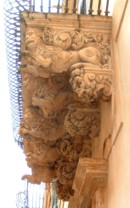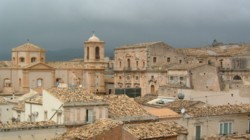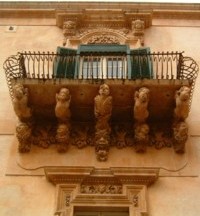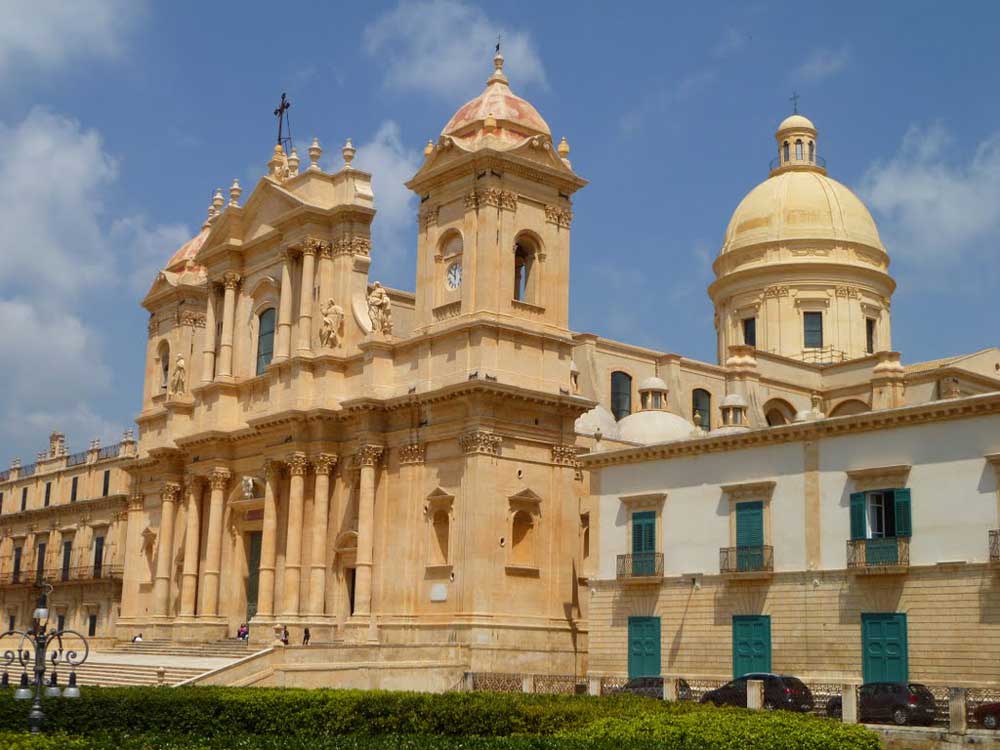Situated in the south-eastern corner of Sicily, Noto is famous for its Baroque architecture, and since 2002 it has been part of the UNESCO World Heritage Site ‘Late Baroque Towns of the Val di Noto’.
Generally listed as one of the ‘must-see’ tourist attractions of this part of Sicily, Noto is a pleasant and attractive little town, with a historic centre that is composed almost entirely of crumbling Baroque palaces, churches and houses. The town’s striking architectural coherence is due to the major earthquake that struck Sicily in 1693. The old town of Noto was almost completely destroyed, and it was decided to to reconstruct a splendid new town several miles away. Thus Noto was rebuilt on its present site, carefully designed for functionality and architectural harmony.
The principal tourist activity in Noto is simply a wander around the narrow streets, admiring the golden-coloured stone buildings, the fantastical facades and balconies.

The main street, Corso Vittorio Emanuele, runs from the imposing gateway of Porta Reale (close to the park and the bus stop) along past the Chiesa di San Francesco (1704-1745), which sits atop its long staircase, to the town’s central piazza. Here the grandcathedral, the Duomo (1693-1770), faces the pretty Palazzo Ducezio (1746), now the seat of the Town Council. An admission fee of 1 admits you to one of the reception rooms within, the Sala degli Specchi (‘hall of mirrors’), a palatial room with mildly interesting 19th Century frescoes.
Some of the fanciest balconies in town belong to the Palazzo Nicolaci (1739), where chubby beasts and cherubs stare down at Via Nicolaci. A suite of rooms on the second floor is open to the public (1.50 admission). Sadly-dilapidated (although restoration work is promised), the wide spaces and painted walls evoke headier past times, as well as offering you the chance to step out onto a balcony and admire the view over Noto.
A third attraction open to the public is the Chiesa di San Carlo, back on the Corso. For 1.50 you can climb the narrow spiral staircase up the belltower (campanile) to admire more views.

Around Noto, other sites to see if you have a car include Noto Antica, the older, ruined town. There are further archaeological sites at Eloro (ruined Helorus) and Palazzo Acreide (former Akrai). Also within reach are Ragusa, a similarly-appealing Baroque town, the necropolis at Pantalica, and the provincial capital, Siracusa.
Over recent years an initiative has started to restore Noto’s crumbling buildings – most crumbly of which was the famous Duomo, whose dome actually collapsed in 1996. While this preservation work may be good news, it does mean that some buildings are under scaffolding and several churches are closed to the public. Restoration of the on the Duomo finished in 2007 the building was reopened with much publicity and celebration
Other than the architecture, there aren’t a large number of tourist attractions in Noto; and most visitors only spend a day here. However if you’re looking for a peaceful place to stay for longer, there are a few B&Bs in Noto, as well as several in the countryside nearby (ideal if you have rented a car and want a break from Sicily’s urban centres). More hotels can be found in Noto Marina, a coastal town about five miles away.

Travel to Noto
Noto is in the Province of Siracusa, and can be reached in about 40 minutes from the larger town. Two different bus companies operate on the route: AST (from Siracusa’s Riva della Posta) and Interbus (from Via Trieste). Both buses also stop in Siracusa at the Foro Siracusano (buy tickets at the newsstand by the bus stop).
Noto’s principal bus stop is by the Giardino Pubblico, to the east of the centre, at the top of Via Principe di Piemonte. Buses run not only to Siracusa but also to other Sicilian destinations such as Catania and Gela. Further down the road there is also a railway station.
Noto accommodation![]()
> Availability search for Noto hotels and B&Bs.
Highlights
Useful external links
